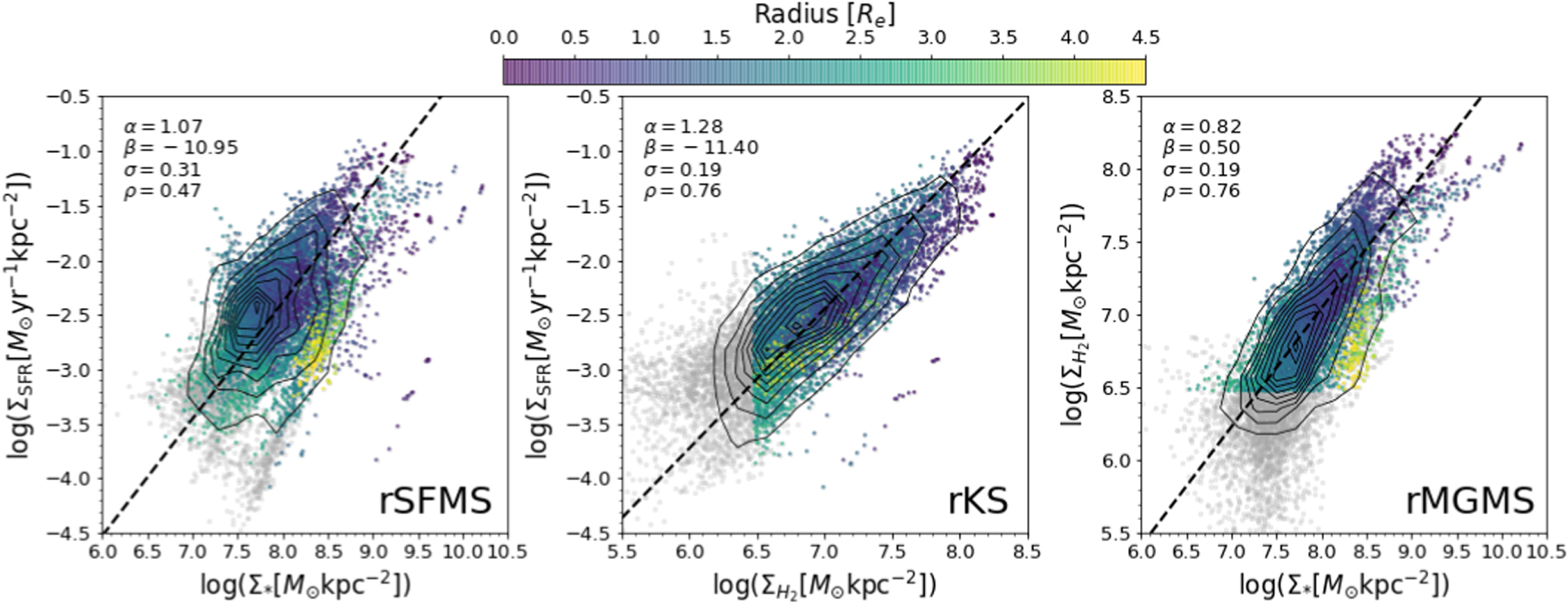Dissecting Nearby Galaxies with piXedfit. II. Spatially Resolved Scaling Relations among Stars, Dust, and Gas
Published in ApJ, 935, 98, 2022
We study spatially resolved scaling relations among stars, dust, and gas in ten nearby spiral galaxies. In a preceding paper, we have derived spatially resolved properties of the stellar population and dust by a panchromatic spectral energy distribution fitting using piXedfit. Now, we investigate resolved star formation (ΣH2-ΣSFR-Σ) and dust scaling relations. While the relations with all subgalactic regions of the galaxies are reasonably tight (σ < 0.3 dex), we find that most of the scaling relations exhibit galaxy-to-galaxy variations in normalization and shape. Only two relations of Σdust-Σgas and Σdust-ΣH2 do not show noticeable galaxy-to-galaxy variations among our sample galaxies. We further investigate the correlations among the scaling relations. We find significant correlations among the normalization of the ΣH2-ΣSFR-Σ relations, which suggest that the galaxies with higher levels of resolved H2 fraction (fH2) tend to have higher levels of resolved star formation efficiency (SFE) and specific star formation rate (sSFR). We also observe that the galaxies with higher levels of resolved dust-to-stellar mass ratios tend to have higher levels of resolved sSFR, SFE, and fH2. Moreover, we find that the galaxies with higher global sSFR and less compact morphology tend to have higher levels of the resolved sSFR, SFE, and fH2, which can explain the variations in the normalization of the ΣH2-ΣSFR-Σ* relationships. Overall, we observe indications of the contributions of both global and local factors in governing the star formation process in galaxies.

